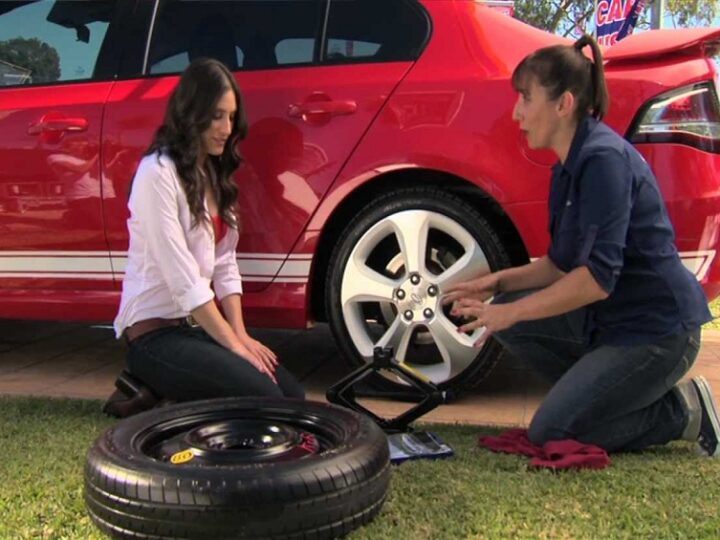Knowing how to change a tire is a necessary skill for all drivers. If you rely on a cell phone to save you in a roadside emergency, there’s always that chance you will forget to charge it, be out of range, or leave it at home. Flat tires can happen anywhere, and a cell phone is no substitute for knowing how to change a flat tire.
Thankfully, changing a tire isn’t all that hard! Just adhere to the following guidelines to be prepared in case you have a flat.
These items should have come with your vehicle:
Jack
Lug wrench
Fully inflated spare tire
Vehicle owner’s manual
If you have misplaced any of these items, or if your car did not come with these items, you should purchase new ones right away. And be sure you’re regularly inflating the spare tire to your vehicle manufacturer’s recommended PSI. You should check the spare’s air pressure every time you check your other tires.
Remember to check pressure every month and before long trips or carrying extra load.
Here are some items that don’t come with your vehicle but that you should stow in your trunk or glove box in case you have to change a flat tire:
Flashlight with working batteries
Rain poncho
Small cut of 2"x6” wood to secure the jack
Gloves
Wheel wedges
As soon as you realize you have a flat tire, do not abruptly brake or turn. Slowly reduce speed and scan your surroundings for a level, straight stretch of road with a wide shoulder. An empty parking lot would be an ideal place. Level ground is good because it will prevent your vehicle from rolling. Also, straight stretches of road are better than curves because oncoming traffic is more likely to see you.
Never attempt to change your tire on a narrow shoulder near oncoming traffic. Keep moving (slowly) until you find a safer spot. While driving on a flat risks ruining your rim, replacing a rim is better than being hit by an inattentive driver.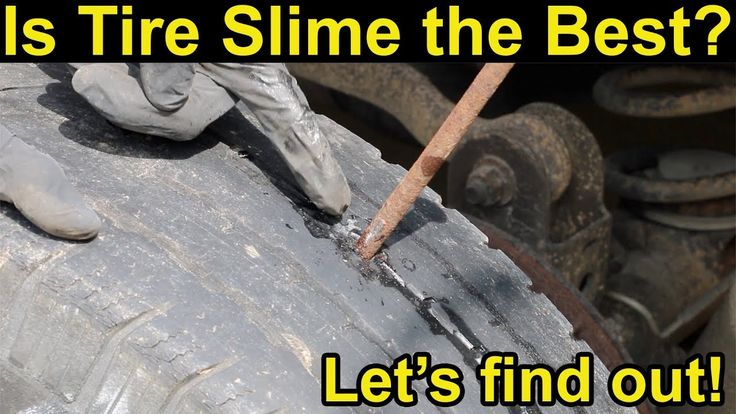
Make sure to consult your owner’s manual and review their specific steps on how to change a flat tire for your vehicle
Your hazard lights or “flashers” will help other drivers see you on the side of the road. To avoid an accident, turn them on as soon as you realize you need to pull over.
Once stopped, always use the parking brake when preparing to replace a flat tire. This will minimize the possibility of your vehicle rolling.
Wheel wedges go in front of or behind the tires to further ensure the vehicle doesn’t roll while you fix the flat tire. If you’re changing a rear tire, place these in front of the front tires. If your flat tire is at the front, put the wheel wedges behind the rear tires.
Bricks or large stones will work just as well as “real” wheel wedges. Just be sure they’re large enough to stop the car from rolling.
If your vehicle has a hubcap covering the lug nuts, it’s easier to remove the hubcap before lifting the vehicle with the jack. If your lug nuts are exposed, you can skip ahead to Step 6.
If your lug nuts are exposed, you can skip ahead to Step 6.
Use the flat end of your lug wrench to remove the hubcap. This will work for most vehicles, but some hubcaps need a different tool to come off. Consult your owner’s manual for proper hubcap or wheel cover removal procedures.
Using the lug wrench, turn the lug nuts counterclockwise until you break their resistance. You may have to use force, and that’s ok. Use your foot or all of your body weight if necessary.
Loosen the lug nuts about ¼ to ½ of a turn, but don’t remove them completely yet. Save that for when it’s time to remove your tire/wheel from the vehicle.
The right place for the jack is usually beneath the vehicle frame alongside the tire that’s flat. Many vehicle frames have molded plastic on the bottom with a cleared area of exposed metal specifically for the jack. To safely lift and avoid damage to the vehicle, follow the instructions for jack placement in your vehicle owner’s manual.
To prevent the jack from settling under the weight of your vehicle and coming off balance, place a small cut of 2x6” wood beneath it before attempting to raise your vehicle. This tactic is especially helpful on asphalt.
With the jack properly positioned, raise the vehicle until the flat tire is about six inches above the ground.
Never put any part of your body under the vehicle during or after raising the vehicle with the jack.
Now it’s time to remove the lug nuts all the way. Since you've already loosened them, you should be able to unscrew them mostly by hand.
Gripping the tire by the treads, pull it gently toward you until it’s completely free from the hub behind it. Set it on its side so that it doesn’t roll away.
Now place the spare on the hub by lining up the rim with the lug bolts. Push gently until the lug bolts show through the rim.
Put the lug nuts back on the lug bolts and tighten them all the way by hand. Once they are all on, check each one again, tightening as much as possible. You will tighten them with the wrench after lowering the vehicle to the ground.
Use the jack to lower the vehicle so that the spare tire is resting on the ground but the full weight of the vehicle isn’t fully on the tire. At this point, you should tighten the lug nuts with the wrench, turning clockwise, as much as you can. Push down on the lug wrench with the full weight of your body.
Bring the vehicle all the way to the ground and remove the jack. Give the lug nuts another pull with the wrench to ensure they’re as tight as possible.
If the hubcap you took from the flat tire will fit your spare, put it in place the same way you removed it initially.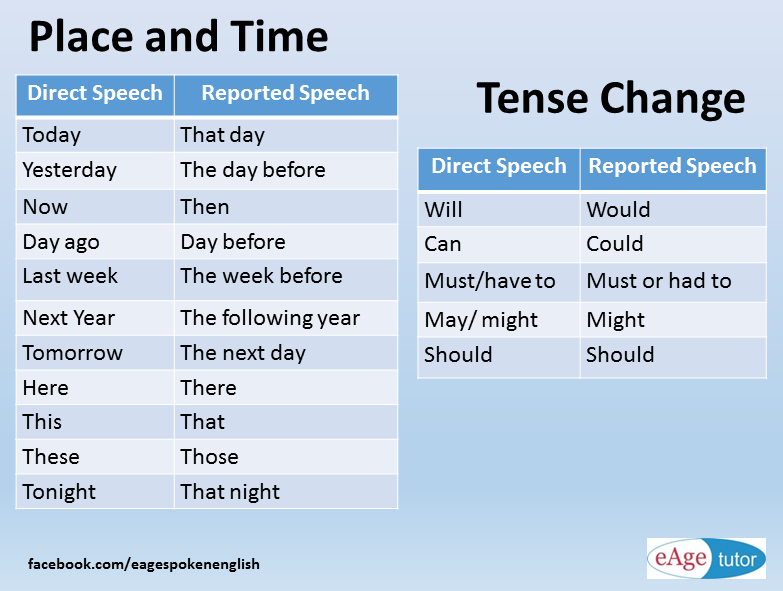 If it doesn’t fit, stow it away with the tire when you stow your equipment.
If it doesn’t fit, stow it away with the tire when you stow your equipment.
You have before you a jack, a lug wrench, wheel wedges, your flat tire, and possibly a hubcap. Don’t forget to put all of them in your vehicle before driving away.
You should check the tire pressure of the spare tire to make sure that it is safe to drive on. “T-Type” temporary spares, also called “mini-spares,” require 60 psi (420 kPa). If the tire needs pressure, drive (slowly) to a service station immediately.
Temporary spare tires aren’t made to drive long distances or at high speeds, so drive cautiously until you’re able to visit a tire technician. A professional should be able to determine whether your tire needs a repair or if it’s time to replace it.
Aside from taking your tire to a professional, the above procedure shouldn’t take more than 15 to 30 minutes to change a tire. Just be sure you don’t leave out any steps.
Just be sure you don’t leave out any steps.
It’s beneficial practice changing a tire in your garage or driveway to ensure you’re ready to handle this situation if it ever happens to you.
Knowing how to fix a flat tire is great, but regular tire maintenance is even more important. In addition to reviewing this guide regularly, remember to do the following:
Keep your tires properly inflated
Rotate your tires according to the manufacturer’s guidelines
Monitor for tread wear
All of these precautions will extend the life of your tires and reduce the likelihood of a flat. While there’s no way to prevent flat tires completely, proper care can improve performance and ensure your tires last as long as possible.
There’s never a good time for a flat. That’s why Bridgestone DriveGuard tires are masterfully engineered to keep you moving for up to 50 miles at speeds up to 50 MPH without disruption.
There’s never a good time for a flat. That’s why Bridgestone DriveGuard tires are masterfully engineered to keep you moving for up to 50 miles at speeds up to 50 MPH without disruption.
See Details Find Your Fit
Changing tires and wheels is not fun: it is a long process and requires physical labor. Not only can tires weigh a lot, but ensuring the lug nuts are as tight as possible is also crucial.
It sounds like a simple process in theory: lift up the vehicle, loosen the lug nuts, and mount the new tire. However, in practice, it takes a lot more. But how long does it take to actually change a tire? Let's take a closer look.
Sadly, many of us have experienced a popped tire before. The worst thing is that it always happens when you are in a hurry. Often, we don't have time to wait for assistance on the side of the road. However, if you have the equipment necessary, you can easily replace the damaged tire.
The worst thing is that it always happens when you are in a hurry. Often, we don't have time to wait for assistance on the side of the road. However, if you have the equipment necessary, you can easily replace the damaged tire.
But, how long does a tire change take when you are alone?
Depending on the situation, the model's weight, and the new tires you wish to mount, it will take about 15 to 30 minutes to change a flat tire on your own. That is if you know the steps you need to take to do so.
You will need the following tools to change a tire, so keep them in your car for emergencies:
Having a pair of work gloves, a reflective warning sign (emergency triangle), and a flashlight can also come in handy.
If changing a tire and wheel takes 15 to 30 minutes, how long does it take to change four tires? The answer will change whether you are replacing them on your own or if you take the vehicle to a professional.
Shops that specialize in dealing with tires on a daily basis will provide you with quick service. Changing four tires on your car will not take longer than an hour. Generally speaking, to replace a tire set a tire shop till need 45 minutes to an hour.
Doing this process on your own will take longer. Count on spending a few hours by your car, corresponding to your skill levels when it comes to tire replacements.
The more experience you have in something, the better you will become in dealing with it. Changing a flat tire is no different. So, how long does it take to get tires changed?
Tire professionals, who deal with putting tires on cars daily, have the experience necessary. Therefore, when a tire popped these services are able to replace it in between 5-15 minutes if they have access to the proper equipment.
However, once your tire deflated it might take you some time to get to the shop.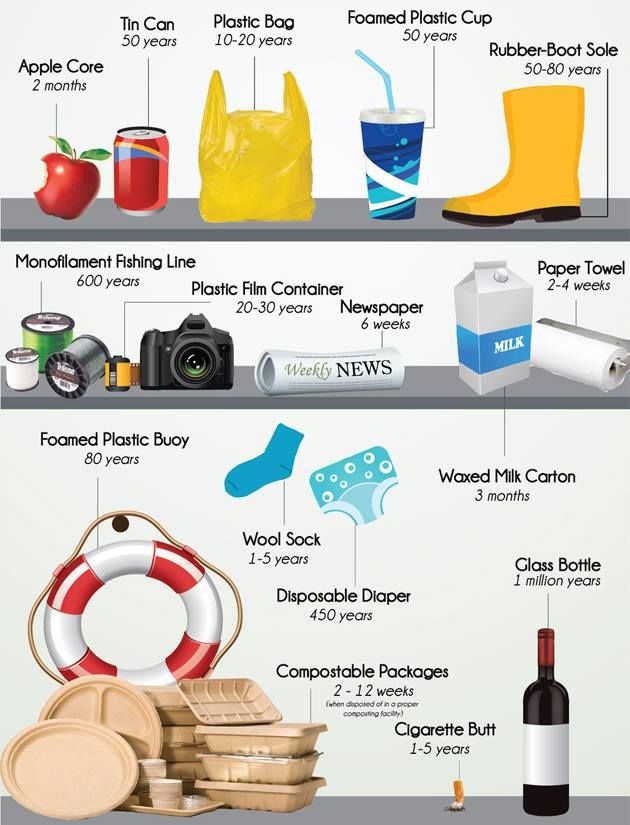 Also, keep in mind that there will be other customers in the tire garage. These can lengthen the time you will be waiting for your car to be operational again, especially when you need to replace both the rear tires and the front tires.
Also, keep in mind that there will be other customers in the tire garage. These can lengthen the time you will be waiting for your car to be operational again, especially when you need to replace both the rear tires and the front tires.
There are different tools available to help with tire changes. Which one you use will shape the time and manner of how you go about changing the tires. It all depends on tire removal, as that is the first step in changing the tire and wheel.
A tire jack is the most straightforward way to go about replacing your tires. However, its big drawback is that without jack stands you will have to go tire by tire, lifting and lowering the vehicle after each tire change.
This can also prove to be dangerous as the vehicle can easily dislodge and fall. Putting on a new tire while only using a tire jack will take longer for this reason. On the other hand, you won't have to bother with correctly placing the jack stands under the vehicle, which will save a bit of time.
Combining the tire jack with jack stands quickens the tire-changing process. When you lift up the car with the jack, you will need to place the jack stands in order to keep the car lifted and in place. This will allow you to safely remove the flat tire.
So, how long does it take to change a tire using this option? Well, this would be the 15 to 30-minute one. You will be change tires quicker as lifting the car and securing it allows you to work faster. Furthermore, if you have two jack stands you can change both front or rear tire pairs at the same time.
Most of us will not have a vehicle lift available at home for our cars, and that's okay. This is an expensive piece of equipment that is wasted if you would only use it to change tires. You will find vehicle lifts in car mechanic shops, where they are used to inspect and fix various car-related issues.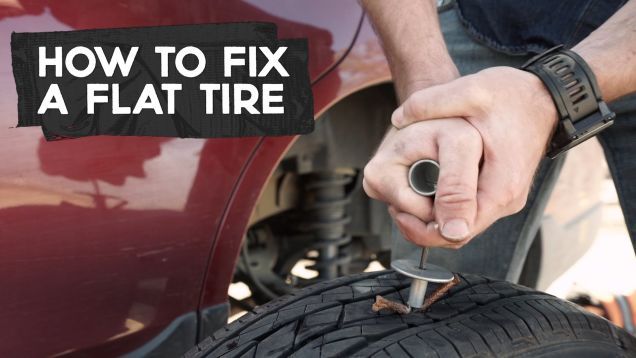
That said, this is the fastest way to change a tire set on a car. As the car is lifted off the ground, all four tires are easily accessible at the same time.
So, how would you go about changing tires on your vehicle? How long does it take to change a tire on your own? We have discussed this previously and our answer was 15 to 30 minutes. However, that is only if you know how to go about it.
Let's take a look at the steps you will need to take to remove and replace a tire.
Find a safe, even spot where you can pull over, like a parking lot. Shift the car into park and set the parking brake (so your vehicle doesn't roll away - which can be dangerous). Be sure the ground you are standing on is level and solid, as anything else will cause you problems.
Now, you will need the spare tire, jack, and tire iron. Remove the hubcap from the wheels. What is a hubcap? Well, it is basically a wheel cover that is used to protect the rims during everyday driving.
Once this is done, use the tire iron (or lug wrench) to loosen the lug nuts, but don't remove them yet. After loosening the lug nuts find the reinforced jack points underneath the vehicle. They are usually before the rear or behind the front tire. The vehicle owner's manual will give you better information regarding this.
Place a brick, wheel wedge, or wood beneath the other tire, to further secure the vehicle. Now you can lift up the car by using the tire jack. Place the jack to the jacking point nearest to the flat and lift up the car. Place the jack stands in place and gently lower the vehicle onto them.
At this point, you can remove the loosened lug nuts, remove the tire and mount the spare onto the vehicle. The valve stem of the spare or new tires will need to face you. After this, screw and tighten the lug nuts. Lift the car a bit to remove the jack stand and then slowly lower it to the ground. Tighten the lug nuts once more until they feel snug.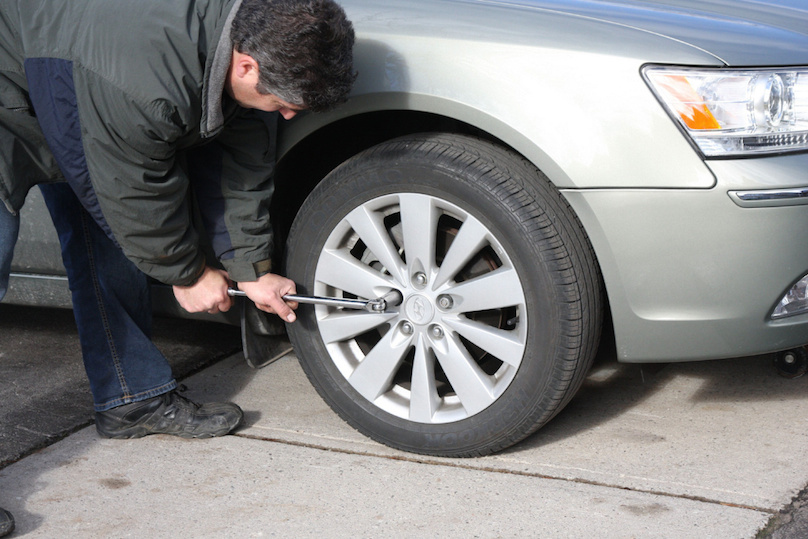
If you know what you are doing, this process should not take longer than 30 minutes per tire.
As for going to a professional, once your vehicle is next in line, they will be able to use their tools to change one or more wheels. Yet, they will still need at least 45 minutes to replace the tires.
Needing new tires is never fun. Now, only do you need to change the tires mounted on your vehicle, but it can be a costly adventure. Therefore, it is important you do all you can to protect your current tires and wheels from damage.
Luckily, regular tire maintenance will give you a hand in this. Checking air pressure regularly, inspecting the tread area for irregular wear and damage, and using your mechanic's services when you realize vehicle issues will go a long way.
In other words, they will minimize the possibility of you needing new tires. Completing these checks regularly will make sure your tires are running smoothly.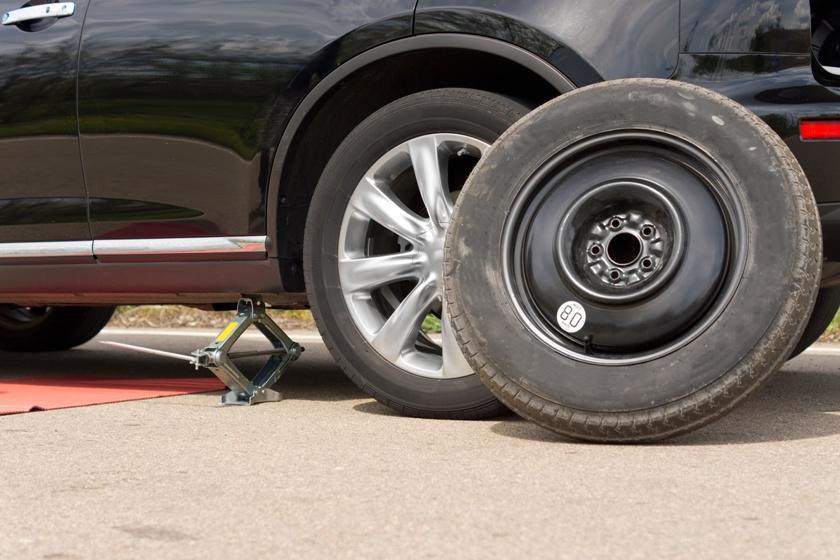
When you wish to change tires, it can be a lengthy process. This is because the procedure is a tedious one. In order to change four tires, the vehicle needs to be lifted up and lowered down at least twice.
That might not seem like a lot of work, but we are talking about heavy objects here. Safety has to come first. If a vehicle falls off the jacks, not only will it get damaged, but it can also easily injure someone. Therefore, even the quickest mechanic will need at least 10 minutes to change a tire.
If you are changing all four tires, the installation will take between 45 minutes to an hour. This will vary based on the experience of your mechanic, the quality of the tires, how well the tires balance, etc. Installing a single tire takes about 10-15 minutes.
Yes, you can drive on a flat tire, but it is not recommended. Driving on a flat tire will damage both the rim and the car, and it can lead to more serious consequences and pricey repairs. Therefore, unless you are in danger, do not drive on a flat tire.
Driving on a flat tire will damage both the rim and the car, and it can lead to more serious consequences and pricey repairs. Therefore, unless you are in danger, do not drive on a flat tire.
The cost of a change or tire replacement greatly depends on the vehicle you are driving. Usually, the price can range between $50 and $200 per tire. Apart from this, expect to pay for mounting, which ranges from $15 to $45.
The procedure for servicing cars at tire change stations can take a different amount of time. The exact figure depends on the equipment present and the professionalism of the master. On average, changing the wheels of a car at a tire fitting stretches for 20-30 minutes, in the absence of a serious workload of personnel.
Contents
In some cases, the installation procedure can take an hour or more. The exact figure will depend on the type of work performed.
The exact figure will depend on the type of work performed.
If you put new skates on the wheels, you need to count on at least an hour. The usual replacement of finished wheels is faster. A savvy master can change all discs in a few minutes.
The need for repairs also affects the efficiency of work. In some situations (vulcanization is required), the procedure may take a day.
Service stations and tire shops in Russia always try to work as quickly as possible. The salary of the master directly depends on the number of clients.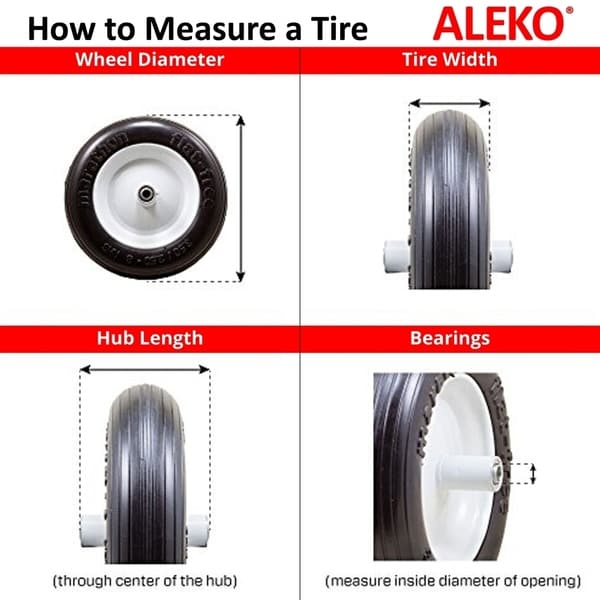 Usually the procedure for changing a set of tires from summer to winter does not take more than one hour.
Usually the procedure for changing a set of tires from summer to winter does not take more than one hour.
Waiting time can be increased by factors that do not affect the immediate speed of the specialist's work - this is the queue and customer requirements.
Installation of summer tires is more difficult for the master than winter tires. This is argued by the increased rigidity of the rubber. Dense sidewalls are difficult to put on discs, which requires great physical effort. nine0005
This difference will not be noticeable to the user. Experienced technicians know how to properly place a product on the machine for fast assembly.
To facilitate the process of changing tires and speed up service, you can foresee a few points in advance and not wait in a huge queue.
 If the mechanic is warned about the visit, a window prepared for a specific car is formed at the service station. For complete confidence, you can give the mechanics an advance payment of 30-50% of the total cost of service. nine0010
If the mechanic is warned about the visit, a window prepared for a specific car is formed at the service station. For complete confidence, you can give the mechanics an advance payment of 30-50% of the total cost of service. nine0010 Leave a comment
Changing shoes is the hottest off-season topic for motorists.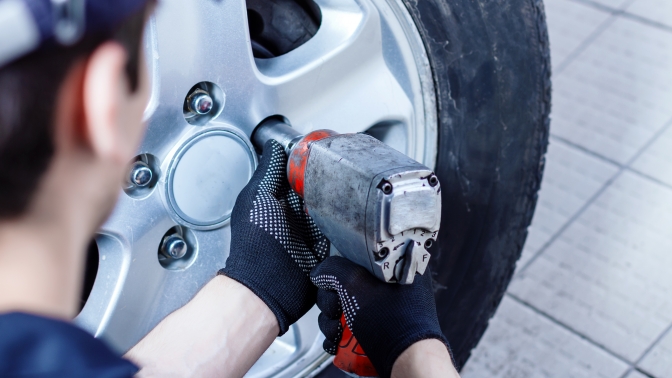 In spring and autumn, queues traditionally line up at tire fitting points. But not everyone wants to participate in this ritual: having collected a second set of tires and wheels, many car owners change the wheels themselves. Let's talk about how to do it right - especially since every driver has to change a wheel on the road sooner or later. nine0005
In spring and autumn, queues traditionally line up at tire fitting points. But not everyone wants to participate in this ritual: having collected a second set of tires and wheels, many car owners change the wheels themselves. Let's talk about how to do it right - especially since every driver has to change a wheel on the road sooner or later. nine0005
To remove a wheel from the car, you first need to get it off the ground - make sure you have a good jack for this. A regular factory jack is in any car, but still it is intended for emergency replacement of a flat tire, and not for regular tire fitting. If you change all the wheels yourself twice a year, it is better to buy a jack more convenient and reliable than a regular one.
Rolling jack is a great solution if you have a garage; you will immediately appreciate its convenience. It is rolling jacks that are used at tire shops, where the speed of work comes first. A few moves and the wheel is already in the air! After a little practice, with the help of a rolling jack, simultaneously hang out two wheels at once - but at the same time it is necessary to use wheel chocks (stops).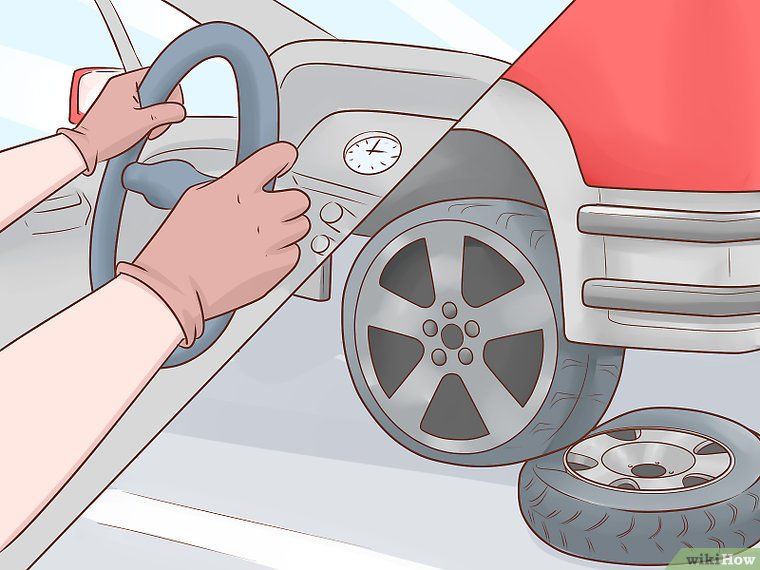 nine0005
nine0005
Learn more about how to choose a car jack.
Drivers often ask themselves: why is the car's standard cylinder key so inconvenient? The answer is simple: the length of the wrench is chosen so as not to exceed the tightening torque of the wheel nuts (100–110 Nm for passenger cars). But loosening stuck nuts often requires more force! In addition, the driver is different for the driver: for example, it will be difficult for a girl to tighten the wheel nuts to the nominal torque with a regular wrench. And don't say you haven't seen girls changing wheels. nine0005
In order not to have to kick the wrench or jump on it (which threatens to break the wheel studs), buy a reinforced wheel wrench: elongated or telescopic. When tightening nuts with such a wrench, you do not need to be zealous - remember the maximum tightening torque. And it will be much easier to unscrew the nuts.
When changing tires, remember to rotate them to ensure even wear. Usually tires with a large tread remain on the drive axle, because there they wear out more intensively. If the car is all-wheel drive, proceed from the design features of 4WD: the original front-wheel drive car with a connected “rear” wears out the front tires more, and the original rear-wheel drive car wears the rear tires. nine0005
Usually tires with a large tread remain on the drive axle, because there they wear out more intensively. If the car is all-wheel drive, proceed from the design features of 4WD: the original front-wheel drive car with a connected “rear” wears out the front tires more, and the original rear-wheel drive car wears the rear tires. nine0005
Tire rotation is more competently performed according to the instructions for the car - but for this you need to mark each of the wheels in advance (for example, with a marker on the inside of the disk). Examples of standard rotation patterns are shown below, and it is recommended to swap tires for even wear every 10,000 km.
On rear- and all-wheel drive vehicles, the front tires are moved to the rear axle diagonally (diagram A) or are changed in a cross pattern (B). On machines with front-wheel drive, the opposite is true: the rear tires are moved diagonally forward (diagram C). nine0005
Tires with a directional tread pattern cannot be turned without overbeading. To rotate them without removing them from the disks, the front wheels are simply swapped with the rear wheels on each side of the car (Diagram D).
To rotate them without removing them from the disks, the front wheels are simply swapped with the rear wheels on each side of the car (Diagram D).
If the car is equipped with a full-size spare tire, not a spare tire, and you have bought a set of five new tires, be sure to include the spare tire in the rotation (diagrams E and F). This will allow you to use the kit longer and easily replace any of the main ones with a spare wheel in case of damage, because their wear will be the same. Thanks to this scheme, buying five tires is more profitable than four, due to the longer operation of the kit. nine0005
After removing the wheel, clean the wheel studs with a wire brush and brake cleaner. You also need to clean and grease the mating surface of the hub with graphite grease so that the rim does not stick to it. Graphite is chemically neutral, does not interact with nickel and chromium, therefore it does not oxidize and does not damage rims.
Whether it is necessary to lubricate the studs themselves is an open question: some automakers recommend it, while others directly prohibit it. If you use standard wheel nuts with a cone, which attract the disk well, and observe the tightening torque, then there will be no harm from a small amount of graphite grease on the studs - most importantly, do not use other types of lubricants (for example, lithium) in this assembly. nine0005
If you use standard wheel nuts with a cone, which attract the disk well, and observe the tightening torque, then there will be no harm from a small amount of graphite grease on the studs - most importantly, do not use other types of lubricants (for example, lithium) in this assembly. nine0005
The wheel mounted on the hub is tightened crosswise (4 studs) or with an asterisk (5 and 6 studs), moving from each nut to the opposite one, and not to the next one - this way the even tightening is achieved.
Wheel nut tightening torque for most passenger cars is 100–110 Nm, SUVs: 120–150 Nm. The exact tightening parameters for the nuts are indicated in the instructions for the car, and to withstand them, use a torque wrench. Of course, not all motorists have it. Without a “speaker”, be guided by the length of a regular wheelbarrow wrench and common sense: do not use the pipe as a lever and do not press on the wrench with your foot. nine0005
Tire pressure may change after six months of storage - be sure to check it after installing all the wheels using a manual pressure gauge. Pressure is always measured with cold tires. If the pressure in the tires is different, equalize it with a compressor, otherwise the car will pull to the side when driving.
Pressure is always measured with cold tires. If the pressure in the tires is different, equalize it with a compressor, otherwise the car will pull to the side when driving.
Read more about tire pressure: how and why to measure it.
The removed set of wheels must be stored correctly until the next season. This requires a well-ventilated, dry area, protected from the sun and precipitation - for example, an indoor heated parking lot. Private garages are not always suitable: if the roof leaks after every rain, then the humidity will destroy the paint on the rims in six months. Too dry air is the other extreme: rubber in such conditions ages intensively, cracks and cracks. Optimum humidity for wheel storage: 55-65% at 20-25°C. Such indicators are maintained all year round in the Tire Hotel Giperavto, a special warehouse for seasonal storage of wheels. nine0005
Tires and assembled wheels (tires on rims) are stored differently. Without disks, tires are stored vertically: they are placed in a row, periodically turning over to change the fulcrum.